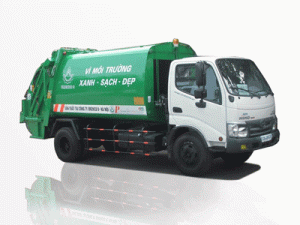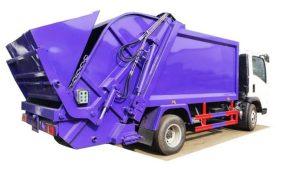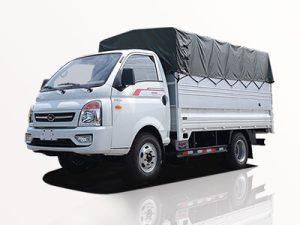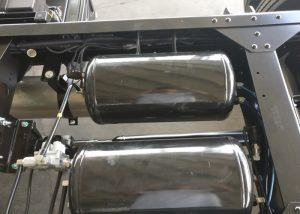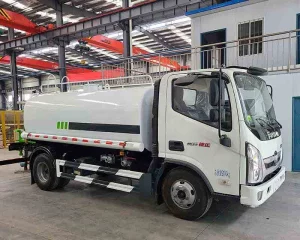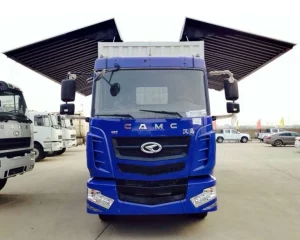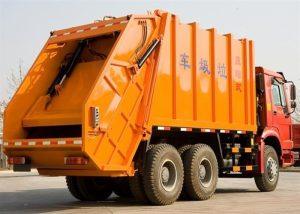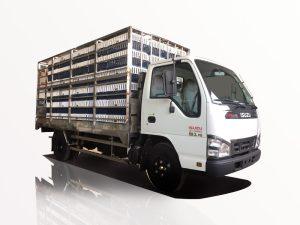Monday to Saturday - 8:00 -17:30
Understanding Flatbed Crane Trucks: A Comprehensive Guide
Flatbed crane trucks are essential machines in construction, shipping, and heavy lifting industries. These versatile vehicles combine a flatbed truck with a crane, allowing for the transport and loading of heavy materials. This comprehensive guide will delve into everything you need to know about flatbed crane trucks, including their construction, benefits, applications, and tips for safe operation.
What is a Flatbed Crane Truck?
A flatbed crane truck is a specialized vehicle that features a flat, open platform (the flatbed) on the back equipped with a crane for lifting and moving heavy loads. The flatbed is designed to facilitate the easy loading and unloading of various goods, while the crane allows for handling items that are not easily moved by standard means.
Components of a Flatbed Crane Truck
Understanding the components of a flatbed crane truck can help users appreciate its functionality:
- Flatbed Platform: A sturdy, flat surface that allows for the transport of various types of cargo.
- Crane: A mechanical arm used for lifting and moving heavy objects. They can vary in design and capacity.
- Chassis: The truck’s frame that supports the flatbed and crane.
- Power Source: Many trucks have a hydraulic system that powers the crane.
- Controls: Operators use these to maneuver the crane safely.
Benefits of Using Flatbed Crane Trucks
Flatbed crane trucks come with numerous advantages, making them a popular choice for various industries:
1. Versatility
The flatbed crane truck can handle different loads, including construction materials, machinery, and equipment. This versatility allows businesses to utilize one vehicle for multiple tasks.
2. Increased Efficiency
Using a flatbed crane truck can significantly reduce loading and unloading time compared to traditional methods, leading to increased productivity on job sites.
3. Safety Features
Modern flatbed crane trucks come equipped with various safety features such as outriggers, load limits, and emergency shut-off options to ensure a safer operating environment.
4. Cost-Effectiveness
Investing in a flatbed crane truck can lead to long-term savings by reducing labor costs and enabling efficient transport of materials without multiple vehicles.
Common Applications of Flatbed Crane Trucks
The uses of flatbed crane trucks span a variety of industries:
1. Construction
Flatbed crane trucks are commonly used in construction for transporting building materials such as beams, concrete blocks, and heavy machinery. They facilitate efficient loading and unloading, helping projects stay on schedule.
2. Shipping and Logistics
In logistics, flatbed crane trucks help move large shipments that require lifting. For example, shipping containers or oversized machinery can be transported securely.
3. Oil and Gas Industry
These trucks are also utilized in the oil and gas sector for transporting equipment and materials to remote locations, often where traditional access is limited.
4. Landscaping
Landscaping companies use flatbed crane trucks to move heavy loads like trees, boulders, and large equipment, which are otherwise challenging to transport.
Choosing the Right Flatbed Crane Truck
Selecting the right flatbed crane truck for your needs involves assessing several factors:
1. Load Capacity
First and foremost, determine the maximum load you need to lift and ensure the truck’s crane has sufficient capacity to handle that weight.
2. Reach
Consider the reach of the crane. If you need to lift items from a distance, ensure the crane arm can extend accordingly.
3. Maneuverability
Evaluate how easily the truck can maneuver in the environments you will be operating in, especially in tight spaces or uneven terrain.
4. Regulatory Compliance
Check if the truck meets local safety and operational regulations. This includes certifications and inspections for cranes.
Maintenance Tips for Flatbed Crane Trucks
1. Daily Inspections
Conduct daily pre-operation inspections to check for leaks, wear, and functionality of the crane and truck components.
2. Schedule Regular Service
Have the truck serviced by certified professionals at recommended intervals. Regular service can help detect issues early.
3. Keep the Crane Clean
Periodically clean the crane to prevent debris buildup, which can affect performance and safety.
Safe Operation of Flatbed Crane Trucks
Ensuring safety while operating flatbed crane trucks is paramount:
1. Proper Training
Only trained and certified personnel should operate flatbed crane trucks. Ensure that operators are familiar with the truck’s functions and safety protocols.
2. Use Safety Equipment
Always wear appropriate personal protective equipment (PPE) when operating or working near the truck.
3. Follow Load Limits
Abide by the load capacity specified by the manufacturer to prevent accidents or equipment failure.
4. Establish Clear Communication
When operating in teams, establish clear signals or communications to ensure everyone is aware of movements and operations.
Cost Considerations of Flatbed Crane Trucks
Investing in a flatbed crane truck involves several cost considerations:
1. Purchase Price
The initial purchase price can vary widely based on brand, capacity, and features. Compare different models to find the best fit for your needs.
2. Insurance and Licensing
Consider the costs of insurance and necessary licensing or permits for operating a flatbed crane truck legally in your area.
3. Maintenance and Repairs
Ongoing maintenance costs, including routine checks and potential repairs, should be included in your budget projections.
4. Fuel Consumption
Evaluate fuel efficiency, as it can impact your operational costs based on usage.
Flatbed Crane Truck Technology Trends
The flatbed crane truck industry continues to evolve with advancements in technology:
1. Automation
New models feature automated controls that improve precision and reduce operator error, enhancing safety.
2. Telematics
Telematics technology allows for real-time monitoring of truck performance, maintenance needs, and operational efficiency.
3. Green Technologies
As environmental awareness grows, some manufacturers are developing hybrid or fully electric flatbed crane trucks to reduce emissions.
FAQs About Flatbed Crane Trucks
1. What are the typical load capacities for flatbed crane trucks?
Load capacities can range from 5 tons to over 50 tons, depending on the design and manufacturer. Always check the specifications of your specific model.
2. Can flatbed crane trucks be used on rough terrain?
Yes, many flatbed crane trucks are designed for off-road use, but it’s essential to choose a model specifically engineered for rough conditions.
3. What safety features should I look for?
Look for features such as outriggers, load limit indicators, emergency shut-off options, and safety interlocks that prevent unsafe operations.
4. How often should maintenance be performed?
Routine maintenance should generally be done at least once every six months, with daily inspections before each use.
5. Are there training programs for operating flatbed crane trucks?
Yes, various organizations offer certified training programs to equip operators with the necessary skills and knowledge to operate these trucks safely.
6. What types of attachments are available for flatbed crane trucks?
Common attachments include various hook types, pallet fork attachments, and lifting beams, which can improve versatility in various applications.


